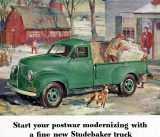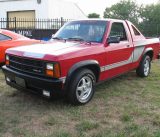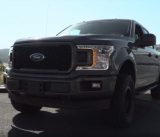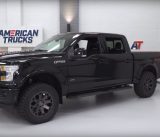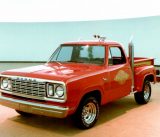Its name starts with a J. It sports two live axles and a transfer case, and it’s part of a “series”, produced in the early sixties through the eighties. It’s commonly spied as a two-door box with a clamshell hood, an ugly grille, an exposed front bumper, and removable body bits. It’s got a tiny wheelbase that measures around 90” to 96”. It came available in a series of trucks, wagons, and the like, and it’s seen combat. It is not a Jeep, though the average layperson who spots one on the road would most likely mistake it as such. We’re talking about the original Toyota FJ40 Land Cruiser, a nearly perfect imitation of the good ole’ Willys.
Yes, the title of this article may be offensive to some Mopar 4×4 owners, but it’s true. We like to feature a lot of Jeep content on DriveZing, but we rarely depart our classic reviews for something from across the oceans. Let’s break down the J40, shall we?

The FJ40 was birthed in 1960 and sported your typical 2-door SUV configuration with dimensions just a hair bigger than the average Jeep CJ. Three wheelbases (short, medium, long) and two engine options (you guess it, gas or diesel) were mated together in a manufacturing plant in Brazil, where the Land Cruiser was marketed as the “Bandeirante”.

The Land Cruiser’s ultra-short wheelbase beats even some old Jeep CJs.
But was the Land Cruiser any good at its job? Absolutely. While the Jeeps and Land Rovers of the era may have been the first good offroad vehicles, the Land Cruiser took that formula and made it better. In fact, the FJ40 sports true militaristic qualities thanks to the Japanese Imperial Army’s lucky capture and subsequent reverse-engineering of an original Willys Jeep in 1941. But where the marques of America made their models more plush, less truck-like, and generally more complicated (and thus less 4×4-worthy), Toyota kept things simple with the FJ40.
A small front grille housed either of the two F series gas engines (a 3.8 or 4.2L straight six), or a plethora of diesels (3.0, 3.2, 3.4, 3.6, 3.7, 3.8, or 4.0L) built by the Germans. But this is where most differences between the Japanese 4×4 and American or British trucks end. Numerous models were developed with a headache-inducing number of trims – just like the Jeep and Land Rover.
Beyond all the wheelbase and motor options, prospective buyers could choose from a station wagon called the FJ55, a 4×2 model called the FJ42, a rare model with a removable soft or hard top called the J43, 44, and 46, and of course the 29 (yes, twenty-nine) different configurations available at different times under the Bandeirante line.
To keep things simple, the average gas motor in the Land Cruiser pushed out around 200 horses and 210 torques, while the diesel motors averaged just shy of 100 horses and between 140 and 180 torques. Though not legal in certain countries, the Land Cruiser was a 4×4 purist’s dream, sporting a foldable windshield (a la a truly Willys) as well as completely removable doors and roofs. Folding rear jump seats made for plenty of storage and provided factory winches were driven directly by the transfer case, offering impressive tow and recovery power.

A mid-restoration FJ40 shows how the roof and doors are easily removable.
The Land Cruiser was a favorite among militias and farmers alike. Watchful soldiers could spy Land Cruiser roaming the Afghan mountains or traipsing through the dense jungles of South America. Today, the FJ40 and its many varients remain so popular that a company, aptly named the FJ Company, specializes in restoring only these trucks. They even offer all the original configurations, well as custom accouterments that transform any regular ole’ FJ40 into an unbeatable offroad machine.

